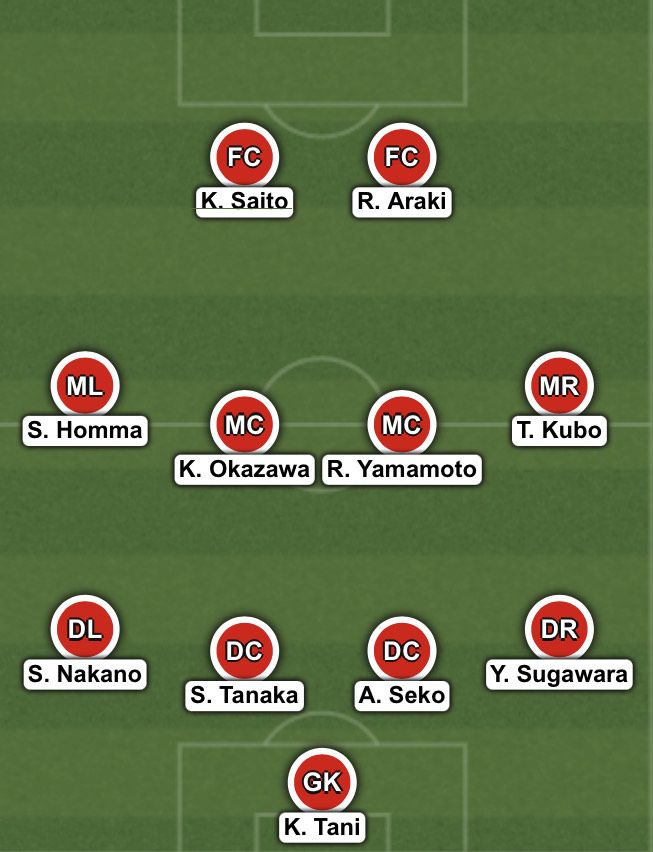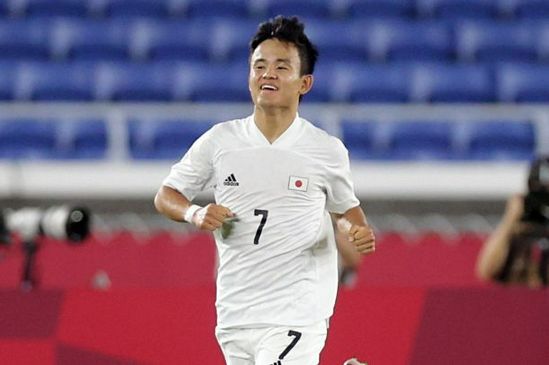Japan’s Golden Generation: An in-depth look at Japanese football’s future by Jake McGhee
A number of international teams have been punching above their weight recently; teams like Denmark and Sweden have enjoyed brilliant runs at the Euros, however Japan have enjoyed a seriously impressive run in the Olympics, coming out with a 100% record in a group containing high- calibre teams such as Mexico and France and then working their way to the semi-finals where they faced Spain who ultimately won the game in extra-time courtesy of a Marco Asensio strike.
Japan have never been a team that have caught world headlines for their football but they find theirselves in a very promising position now, with a crop of young talents at their disposal Japan are surely looking forward to showing the world what they can do in the coming years.
So who exactly should we be looking out for?
The Samurai Blue’s starboy Takefusa Kubo is the obvious choice, Kubo has been in Spain for the majority of his career, starting off initially at La Masia he was eventually tempted back to Japan where he was noticed by Real Madrid and brought in, since his arrival in Spain he has been sent out on loan numerous times, currently he is having a 2nd spell at RCD Mallorca.
Aside from the obvious, Takuhiro Nakai is another player who has bags of potential, following the blueprints that Takefusa set out Nakai plays his football for Real Madrid, he is hailed as one of the most promising players in Real Madrid’s youth academy and received his call-up to the senior squad in October 2020, at just 17 years old Nakai is a player who should kick on and make himself a household name in Japan. Nakai is hailed as a very consistent player, the attacking midfield earned praise from Real Total’s Editor-in-Chief Nils Kern who said “It is his consistency and calmness that stand out.”
Nakai and Kubo are two perfect examples of players who have found success outside of their home nation and have established the building blocks of their careers abroad, however Japan hides many gems within its borders, now it is time to look at a few of them.
Shinya Nakano is an 18 year old left back who plays for Sagan Tosu in Japan’s top flight, although he is still 18 Shinya has already racked up 25 appearances this season and has bagged 2 assists while doing so, he is quickly becoming a staple of this Sagan Tosu squad as he cements his place at left- back. Shinya boasts an impressive fearlessness for a player so young as he shows a keenness to get on the ball and drive forward, he averages 1.8 successful dribbles per 90 along with 2.1 crosses per 90. Nakano is a very intelligent player and has a good footballing brain for his age, he reads the game very well which allows him to seamlessly move up and down the left flank and smoothen the transition from defence to attack. Shinya looks destined to be Tosu’s greatest export since Daichi Kamada who came through the ranks of Sagan.
Kosei Tani is a 20 year old goalkeeper who guards Shonan Bellmare’s net, Kosei has also featured for the national team at the Olympics, being their number 1 throughout the tournament. Tani kept an impressive 3 clean sheets out of the 6 games he played in the Olympics, he has also kept 8 clean sheets out of 24 so far this season, not bad at all for a goalie who plays at a team sitting at 15 th in the league. Tani’s assuredness and maturity shone through against Spain in the Olympics, although Japan slumped out after extra time Tani put in a performance he should be proud of. At just 20, Tani is sure to develop even further and push for a starting spot after this season finishes, he will return to his parent club Gamba Osaka to fight for the number 1 role with the veteran Masaaki Higashiguchi.
Kosei Okazawa is the youngest player I’ve included, at just 17 Kosei shows maturity beyond his years, operating in the Regista role for Cerezo Osaka’s U-23 team, Kosei likes to sit deep in the midfield and dictate the tempo of the game. Although he is only 17 Kosei has already staked his claimed to the armband and has featured as captain many times, he was first given the armband at the age of 16, an incredibly impressive feat which shows his leadership qualities. Kosei has played a total of 30 games so far for the U-23’s and looks set to make the jump up to the senior squad soon enough and maybe even receive an international call-up at youth level.

What’s next for Japan’s national team?
With a rapidly ageing national squad it seems to be an apt time to call up some of the young talents hidden away in Japan and abroad, the country’s reliable shot stopper Eiji Kawashima isn’t getting any younger at 38 and following Tani’s heroics at the Olympics it looks inevitable that he will be the heir to his throne.
Japan are rapidly developing as a footballing nation with many players making the jump over to Europe and succeeding, with a combination of continued focus on the game in Japan and players continuing to flourish abroad there is absolutely no reason why Japan couldn’t progress even further and become a top 20 ranked nation, currently sitting at 24 th in the FIFA world rankings they are certainly laying the groundwork out for a successful team and future. If there is any inspiration to be taken for the men’s team it surely lies with the women’s national team, a team which has repeatedly impressed in the women’s World Cup and even won it in 2011.
Youth Football in Japan.
Japan has no standout youth academies from an outside perspective, there are no football factories that churn out youngsters on such a consistent basis like Ajax and Sporting Lisbon do. There are a few reasons for this, football hasn’t always been Japan’s biggest sport, and it’s still in contention for whether it is, baseball and football are the two biggest sports in Japan. The majority of big players that come out of Japan are discovered via training camps that big clubs such as Real Madrid establish, this is how Takuhiro Nakai was first discovered and brought over to Spain.
Another reason is a lack of visibility, as the J-League isn’t recognised that much internationally and hasn’t been raided season after season like the Eredivisie and other leagues have been, Japanese football isn’t a feeder to bigger leagues, most players that play in Japan tend to stay in Japan, or at least have historically. However there is now a buck in this trend as more and more players go abroad to pursue a career in Europe, Tomiyasu, Kubo, Hasebe and Minamino are all brilliant examples of what happens when European scouts delve into the J-League and discover what it has to offer.
Conclusion.
All in all Japanese football looks to be on the up, a rising sense of optimism surrounds the national team following the success at the Olympics and more and more players are being tipped for a move to Europe. Take Kyogo Furuhashi for example, when he first came to Celtic many fans wrote him off as they thought he wouldn’t withstand the rough and tumble nature of the Scottish game, however he has proved these doubters wrong and shown what talents the J-League can produce with 7 goals in 9 appearances so far. Overall Japan can hold its head high and these next few years will likely be very exciting for the J-League along with the national team with many young talents combined with veterans to guide them along the way.







